Australian Tropical Rainforest Plants - Online edition
Omphalea celata P.I.Forst.


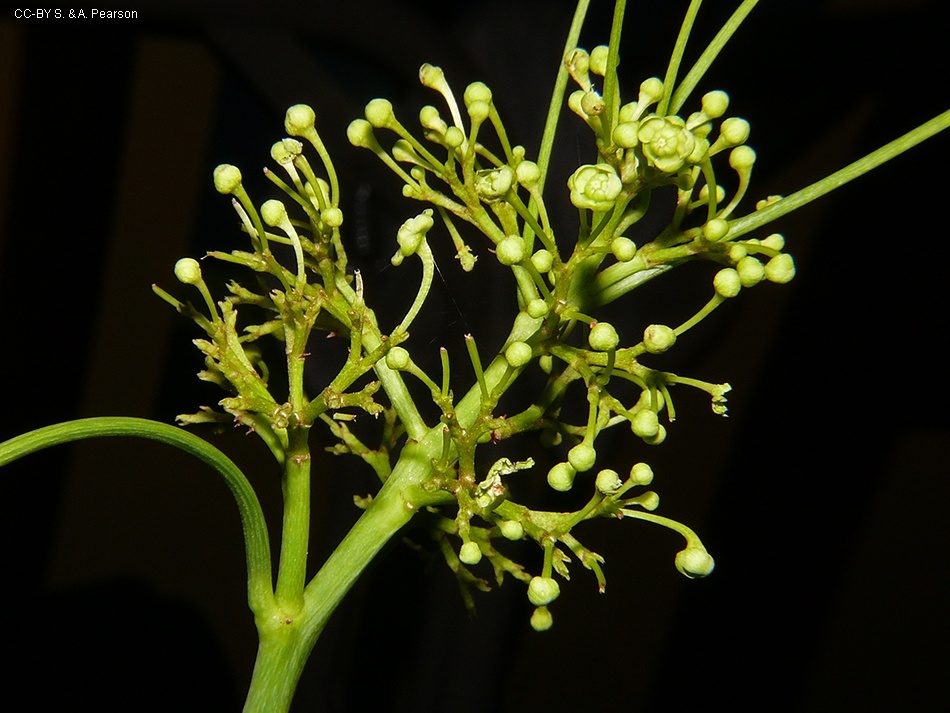
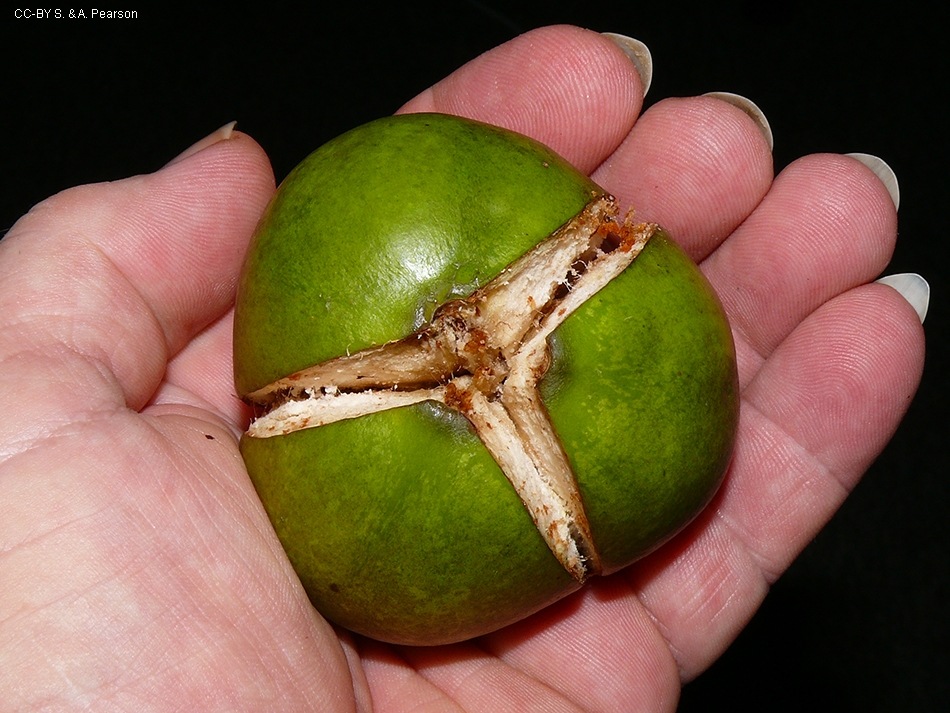
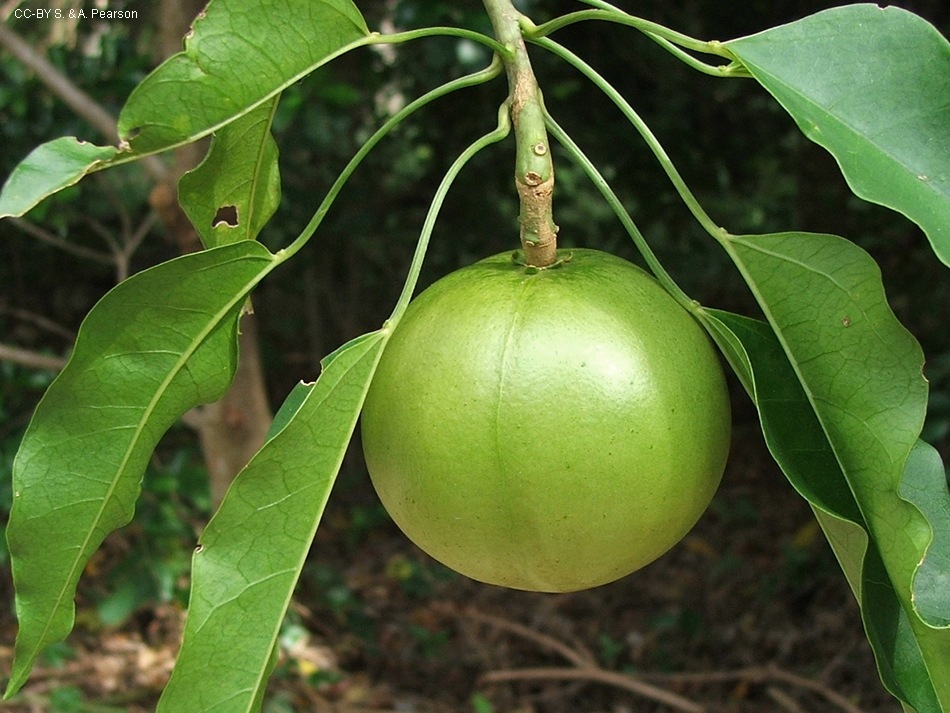
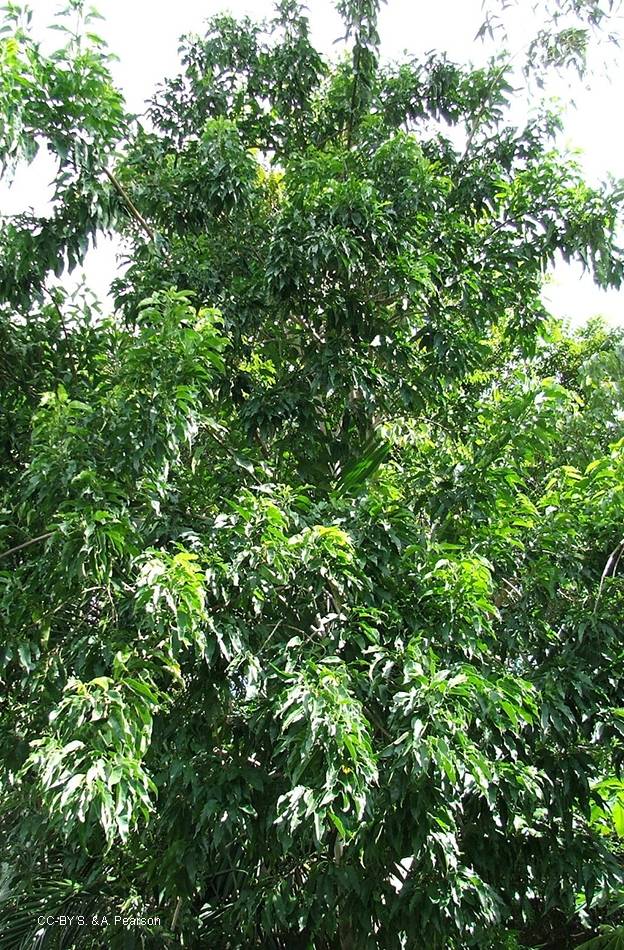
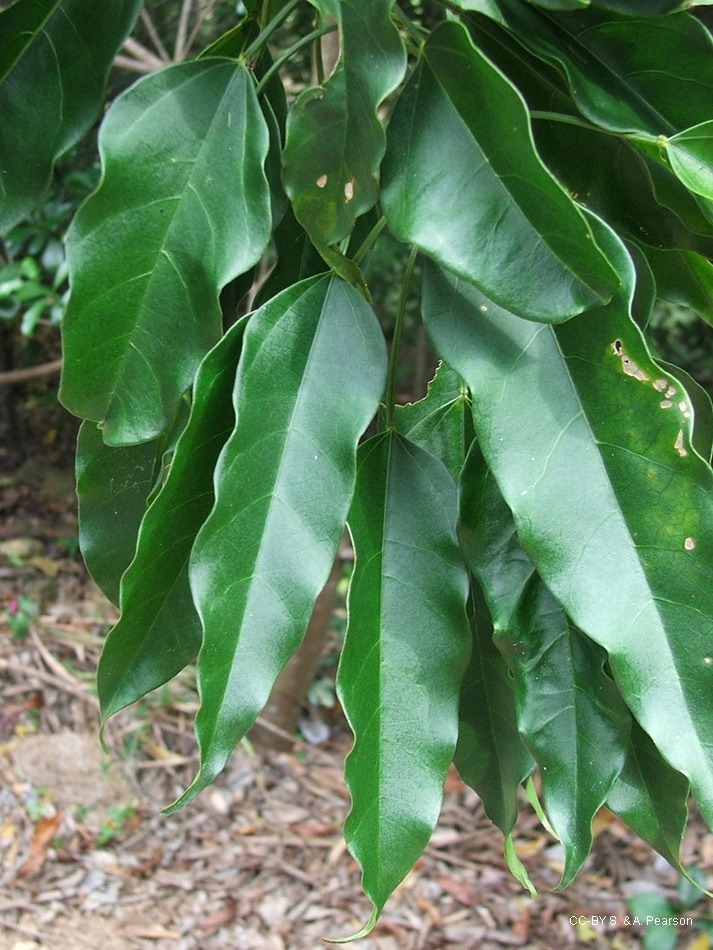
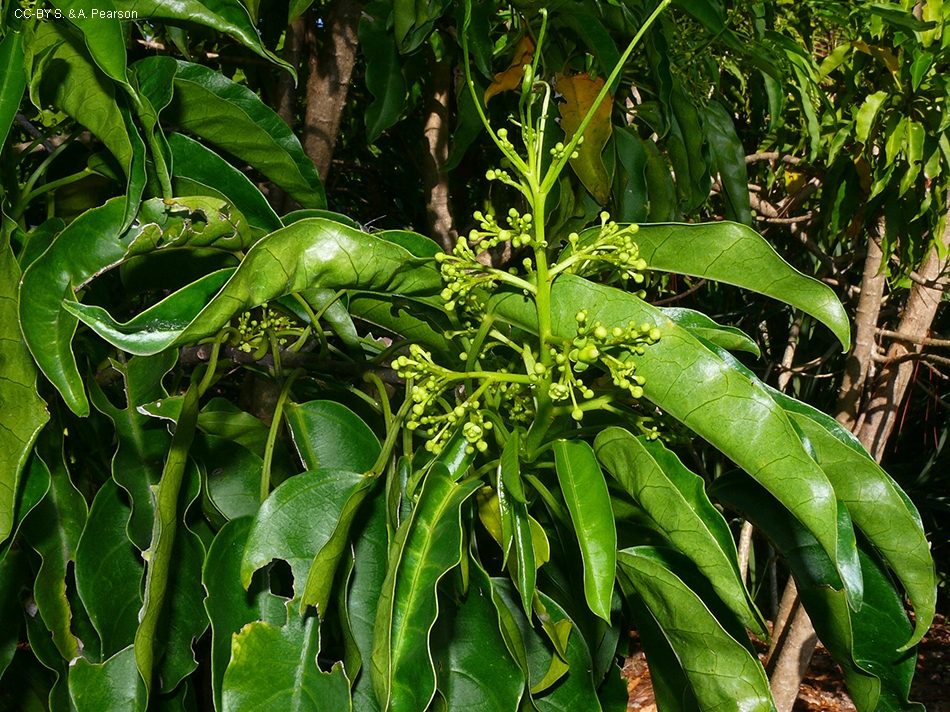
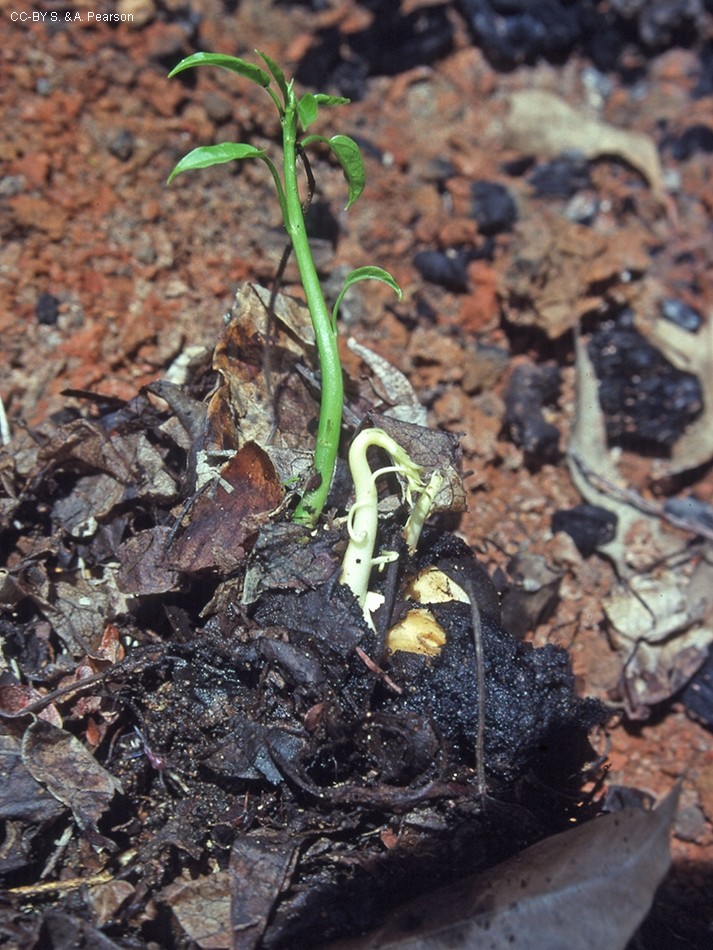
Forster, P.I. (1995), Omphalea celata, a new species of Euphorbiaceae from central Queensland. Austrobaileya 4(3): 381. Type: Queensland, South Kennedy District: Hazlewood Gorge, south-southwest of Eungella, 20 July 1994, P.I. Forster 15643 (holo: BRI [2 sheets + spirit]; iso: AD, DNA, K, L, MEL, NSW, MO).
Tree to 12 m high. Bark glossy and cream coloured.
Leaves simple and alternate. Stems and petioles produce clear exudate. Stipules lanceolate, to 1.5 mm long, caducous (falling early). Petioles channelled or grooved above, 2-7.5 cm long. Two large flat glands usually visible on the upper surface of the petiole close to its junction with the leaf blade. Leaf blades lanceolate, lanceolate-ovate to ovate, 4.5-12 cm long, 1.5-8 cm wide, base cuneate to obtuse, margin entire ± sinuate, apex subulate to acumiante. Venation more or less penniveined, basal pair of veins opposite and arising at a more acute angle than remaining veins. Lower surface pale grey-green.
Inflorescence paniculate, terminal; both reduced leaflike bracts and smaller linear to lanceolate bracts present. Leaflike bracts are often found at the base of an inflorescence branch, with petiole 50-110 mm long and lamina 40-55 m long, glands present; smaller bracts to 1 mm long. Plant monoecious, flowers unisexual. Male flowers: to 3.5 mm in diameter, usually more common than female flowers, on filiform pedicels, 5-9 mm long. Tepals 5, 2-2.5 mm long, concave on the inner surface, green, sometimes recorded as cream. Disk glands 5, thick and fleshy, each about 1 mm long and slightly shorter than the staminal column. Stamens fused to form a column about 1.25 mm long; anthers fused to form a 3-lobed synandrium. Female flowers: to c. 3 mm in diameter, on stout pedicels, 2.5-3 mm long. Tepals 5, 2-2.5 mm long, concave on the inner surface. Ovary globose, to 1 mm long, 2 or 3 locular, with 1 ovule per locule. Styles connate to form a swollen obtuse column, indistinct from ovary. Ovules 1 per locule.
Fruits depressed globular, 2 or 3-lobed, about 5-6 cm long, 5-6 cm in diam., splitting along sutures, green. Seeds subglobose, about 2.5-3 cm long, 2.3- 2.5 cm in diameter.
Cataphylls produced before the first pair of true leaves. Cataphylls about 45 mm long. First true leaf blades broadly lanceolate. Two large rounded glands present near the apex, one on each side of the petiole near its junction with the leaf blade. At the tenth leaf stage: leaf blade glabrous, broadly lanceolate, apex subulate to acuminate , base obtuse, margin ± entire but often sinuate. Stipules present on new shoots only and ± mucilaginous.
Endemic toCEQand known from few locations between Bowen and Mackay. Located in semi-fragmented semi-evergreen vine thicket and Araucarian microphyll vine forest.
Aleurites sp. Hazlewood Gorge (S.G. Pearson SP439)
1197





